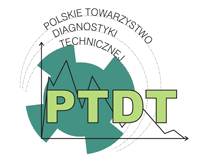Detection of three-dimensional belt deviation and longitudinal tearing defects based on binocular line laser technology
1
National Energy Group Ningxia Coal Industry Co., Ltd, Yinchuan 750000, China
2
China Coal Technology and Engineering Group Chongqing Research Institute Co., Ltd, Chongqing 400000, China
3
Tiandi (Changzhou) Automation Co., Ltd, Changzhou 213000, China
Submission date: 2024-01-08
Final revision date: 2024-06-17
Acceptance date: 2024-07-04
Online publication date: 2024-08-28
Publication date: 2024-08-28
Corresponding author
Hong Gao
China Coal Technology and Engineering Group Chongqing Research Institute Co., Ltd, Chongqing 400000, China
China Coal Technology and Engineering Group Chongqing Research Institute Co., Ltd, Chongqing 400000, China
Diagnostyka 2024;25(4):2024401
KEYWORDS
TOPICS
ABSTRACT
The detection of belt deviation and longitudinal tearing defects is the key to ensuring the safe and reliable operation of the equipment. A three-dimensional belt deviation and longitudinal tear defect detection system based on binocular line laser technology was proposed to address the low detection efficiency and high delay of conveyor belt deviation and longitudinal tear detection. A line laser was irradiated onto the surface of the belt through an image acquisition device, and the collected images were preprocessed. Image segmentation, feature extraction, and pattern recognition techniques were used to detect belt deviation and longitudinal tearing defects. These results confirmed that the system designed in this study only took an average of 20 to 30 milliseconds to process an image. The average accuracy of secondary detection was 97.37%, which was 7.5% higher than that of primary detection. The average processing time of the first level detection was 19.45ms. The average processing time of the two level detection was 23.73ms, which was 4.28ms longer than the first level detection. The designed 3D belt deviation and longitudinal tearing defect detection system based on binocular laser technology has high real-time and accuracy, which is very important for the safety production of enterprises.
FUNDING
This research received no external funding
REFERENCES (20)
1.
Zhao H, Wu B. Three-dimensional face modeling technology based on 5G virtual reality binocular stereo vision. International Journal of Communication Systems. 2022; 35(5): e4651. https://doi.org/10.1002/dac.46....
2.
Pakistan, Saeed M, Ahmad MR, Department of Mathematics. Refined pythagorean fuzzy sets: Properties, set-theoretic operations and axiomatic results. Journal of Computational and Cognitive Engineering. 2022;2(1):10–6. https://doi.org/10.47852/bonvi....
3.
Choudhuri S, Adeniye S, Sen A. Distribution alignment using complement entropy objective and adaptive consensus-based label refinement for partial domain adaptation. Artificial Intelligence and Applications. 2023; 1(1): 43–51. https://doi.org/10.47852/bonvi....
4.
Oslund S, Washington C, So A, Chen T, Ji H. Multiview robust adversarial stickers for arbitrary objects in the physical world. Journal of Computational and Cognitive Engineering. 2022; 1(4): 152–8. https://doi.org/10.47852/bonvi....
5.
Liu L. Lane offset survey for one-lane horizontal curvatures using binocular stereo vision measurement system. Journal of Surveying Engineering. 2021; 147(4): 04021017. https://doi.org/10.1061/(ASCE)....
6.
Ye J, Xia G, Liu F, Cheng Q. 3D reconstruction of line-structured light based on binocular vision calibration rotary axis. Applied Optics 2020; 59(27): 8272–8. https://doi.org/10.1364/AO.403....
7.
Wu Z, Wei X, Song L, Zhu X. Solution for vision occlusion based on binocular line-structured light. Optoelectronics Letters. 2021; 17(7): 432–7. https://doi.org/10.1007/s11801....
8.
Wu Y, Zhou Y, Chen S, Ma Y, Li Q. Defect inspection for underwater structures based on line-structured light and binocular vision. Applied Optics. 2021; 60(25): 7754–64. https://doi.org/10.1364/AO.428....
9.
Wang Y, Wang X. On-line three-dimensional coordinate measurement of dynamic binocular stereo vision based on rotating camera in large FOV. Optics Express. 2021; 29(4): 4986–5005. https://doi.org/10.1364/OE.414....
10.
Li D, Xiao L, Wei H, Li J, Liu M. Spatial-temporal measurement of waves in laboratory based on binocular stereo vision and image processing. Coastal Engineering. 2022; 177: 104200. https://doi.org/10.1016/j.coas....
11.
Wang Y, Miao C, Liu Y, Meng D. Research on a sound-based method for belt conveyor longitudinal tear detection. Measurement. 2022; 190: 110787. https://doi.org/10.1016/j.meas....
12.
Yang R, Tiezhu Qiao Tiezhu Qiao, Pang Y, Yang Y, Zhang H, Yan G. Infrared spectrum analysis method for detection and early warning of longitudinal tear of mine conveyor belt. Measurement. 2020; 165: 107856. https://doi.org/10.1016/j.meas....
13.
Zhang M, Jiang K, Cao Y, Li M, Hao N, Zhang Y. A deep learning-based method for deviation status detection in intelligent conveyor belt system. Journal of Cleaner Production. 2022; 363(20): 126–38. https://doi.org/10.1016/j.jcle....
14.
Liu Y, Miao C, Li X, Xu G. Research on deviation detection of belt conveyor based on inspection robot and deep learning. Complexity. 2021; 2021(1): 3734560. https://doi.org/10.1155/2021/3....
15.
Sun X, Wang Y, Meng W. Evaluation system of curved conveyor belt deviation state based on the ARIMA–LSTM combined prediction model. Machines 2022; 10(11): 1042. https://doi.org/10.3390/machin....
16.
Nguyen V, Jiao R, Feng D, Hou L. Study on running deviation mechanism and intelligent control of belt conveyor. Vibroengineering Procedia. 2021; 36: 115–20. https://doi.org/10.21595/vp.20....
17.
Pan G, Zheng Y, Guo S, Lv Y. Automatic sewer pipe defect semantic segmentation based on improved U- Net. Automation in Construction. 2020. https://doi.org/10.1016/j.autc....
18.
Sergiyenko OY, Tyrsa VV. 3D optical machine vision sensors with intelligent data management for robotic swarm navigation improvement. IEEE Sensors Journal. 2021; 21(10): 11262–74. https://doi.org/10.1109/JSEN.2....
19.
Wang J, Yue K, Duan L. Models and techniques for domain relation extraction: a survey. Journal of Data Science and Intelligent Systems. 2023; 1(2): 65–82. https://doi.org/10.47852/bonvi....
20.
Deng Y, Li Z, Chen J. Interdisciplinary trends in the reintegration of organisms with perceptron units. Journal of Data Science and Intelligent Systems. 2023. https://doi.org/10.47852/bonvi....
Share
RELATED ARTICLE
We process personal data collected when visiting the website. The function of obtaining information about users and their behavior is carried out by voluntarily entered information in forms and saving cookies in end devices. Data, including cookies, are used to provide services, improve the user experience and to analyze the traffic in accordance with the Privacy policy. Data are also collected and processed by Google Analytics tool (more).
You can change cookies settings in your browser. Restricted use of cookies in the browser configuration may affect some functionalities of the website.
You can change cookies settings in your browser. Restricted use of cookies in the browser configuration may affect some functionalities of the website.


